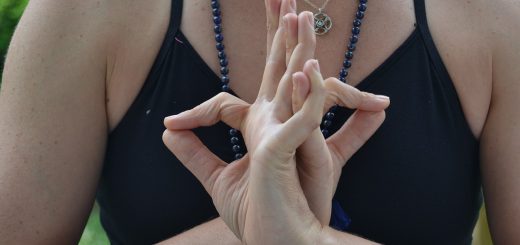Yoga Nidra: The Art of Yogic Sleep for Deep Relaxation

Before diving in, please note: This post is for informational purposes only. If you’d like to know more about how we approach topics, feel free to check out our friendly Disclaimer Page.
Hey there, amazing readers! 🖐️ Just a quick note: yes, we know there are a lot of ads here. Trust us, we get it—it’s not the prettiest look, but they help us keep this blog alive and kicking. Those pesky little ads cover the costs of all the behind-the-scenes magic, from hosting and tech stuff to creating content we hope you’ll love.
We’re committed to delivering quality posts, and your support (even just sticking around despite the ads) means everything to us. So, bear with us, and thanks for helping us keep the good vibes rolling. Now, on to the fun stuff! 😉
TRANSLATE BUTTON AT THE END OF THE ARTICLE
Overview
Yoga Nidra, also known as Yogic Sleep, is a powerful technique that allows you to experience deep relaxation and rejuvenation.
In this article, we will explore the art of Yoga Nidra and how it can help you achieve a state of profound relaxation.
We will delve into the science behind Yoga Nidra, its benefits, and the techniques to enhance your experience.
Additionally, we will compare Yoga Nidra with regular sleep and discuss how you can incorporate this practice into your daily routine.
Get ready to embrace the restorative power of Yoga Nidra and discover a path to deep relaxation.
Yoga Nidra: The Art of Yogic Sleep
Yoga Nidra is a powerful practice that combines elements of meditation, relaxation, and self-inquiry to guide you into a state of deep relaxation.
The term "Yoga Nidra" translates to "yogic sleep" in Sanskrit, and it refers to a state of consciousness between wakefulness and sleep.
Unlike regular sleep, where you may experience dreams and unconsciousness, Yoga Nidra allows you to remain consciously aware while entering a state of profound relaxation.
Understanding the Science behind Yoga Nidra
Yoga Nidra works by activating the body’s relaxation response, which helps to reduce stress and promote overall well-being.
During the practice, various physiological changes occur in the body, such as a decrease in heart rate, blood pressure, and respiration rate.
These changes promote a state of deep relaxation and allow the body to enter a state of rest and repair.
Research has also shown that Yoga Nidra affects the brain in positive ways.
It helps to balance the activity between the two hemispheres of the brain, promoting a state of equilibrium.
Additionally, the practice increases the production of gamma-aminobutyric acid (GABA), a neurotransmitter that is responsible for calming the nervous system.
Benefits of Yoga Nidra for Deep Relaxation
The benefits of Yoga Nidra extend beyond relaxation.
Regular practice of Yoga Nidra can lead to improved sleep quality, reduced anxiety and stress levels, enhanced focus and concentration, and increased self-awareness.
It can also aid in the management of chronic pain, improve mood, and promote emotional well-being.
Furthermore, Yoga Nidra has been found to have a positive impact on various health conditions, including insomnia, depression, post-traumatic stress disorder (PTSD), and hypertension.
It is a powerful tool that can support overall mental, emotional, and physical well-being.
How to Prepare for Yoga Nidra Practice
Before you begin your Yoga Nidra practice, it is important to create a calm and comfortable environment.
Find a quiet space where you will not be disturbed and ensure that the temperature is comfortable.
You may choose to use props such as a bolster, blankets, or an eye pillow to enhance your comfort.
It is also beneficial to establish a regular practice time for Yoga Nidra.
Consistency is key to experiencing the full benefits of this practice.
Choose a time of day when you are least likely to be interrupted and make a commitment to yourself to prioritize your practice.
Step-by-Step Guide to Practicing Yoga Nidra
Lie down on your back in a comfortable position, with your arms extended alongside your body, palms facing up.
Close your eyes and take a few deep breaths.
Set an intention for your practice.
This can be a simple affirmation, such as "I am calm and relaxed" or "I am grateful for this time of rest."
Bring your awareness to different parts of your body, starting from your right hand.
Slowly move your awareness to each part of your body, from the hand to the arm, shoulder, and so on, until you reach the top of your head.
As you scan your body, notice any areas of tension or discomfort.
Allow your breath to flow into those areas, releasing any tension or tightness.
Move your attention to your breath, observing the natural rhythm of your inhales and exhales.
Notice the sensation of the breath entering and leaving your body.
Begin to count your breaths backward from 27 to 1.
With each exhale, count one number lower.
If your mind wanders, gently bring it back to the count and continue.
Enter a state of deep relaxation by repeating a specific visualization or mantra.
This could be imagining yourself in a peaceful natural setting or silently repeating a calming phrase, such as "I am at peace."
Gradually bring your awareness back to your body and your surroundings.
Take a few moments to stretch and slowly transition back to a seated position.
Reflect on your experience and notice any changes in your thoughts, emotions, or physical sensations.
Embrace the sense of relaxation and calmness that Yoga Nidra has brought you.
Practice gratitude for the time you have dedicated to yourself and carry the sense of deep relaxation with you throughout your day.
Exploring the Different Stages of Yoga Nidra
Yoga Nidra typically consists of several stages that guide you into a state of deep relaxation.
These stages include:
Preparation: This stage involves finding a comfortable position and setting your intention for the practice.
Rotation of Consciousness: In this stage, you systematically bring your awareness to different parts of your body, relaxing each part as you move along.
Breath Awareness: Here, you focus on your breath and observe its natural rhythm, allowing it to deepen your relaxation.
Sensory Perception: This stage involves exploring sensations in your body, such as warmth, heaviness, or tingling, without attachment or judgment.
Visualization: In this stage, you create mental images that promote relaxation and healing.
You may imagine yourself in a peaceful place or visualize specific healing colors or symbols.
Intention Setting: This stage involves planting positive affirmations or intentions in your subconscious mind, which can help support your overall well-being.
Coming back: This final stage brings you back to a state of wakefulness and concludes the practice, leaving you feeling refreshed and rejuvenated.
Techniques to Enhance Your Yoga Nidra Experience
To enhance your Yoga Nidra experience, you can incorporate the following techniques:
Use props: Utilize props such as bolsters, blankets, or pillows to support your body and enhance comfort during the practice.
Create a sacred space: Designate a specific area in your home as your sacred space for Yoga Nidra.
Decorate it with soothing colors, candles, or other objects that promote relaxation.
Experiment with different scripts: Explore various Yoga Nidra scripts or guided recordings to find the one that resonates with you the most.
Experiment with different styles and voices to enhance your experience.
Practice with a group: Join a Yoga Nidra class or find a virtual community where you can practice with others.
Group practices can provide a sense of support and connection.
Set a timer: Use a timer or a Yoga Nidra app to ensure that you stay within the desired time frame for your practice.
This can help you relax and fully surrender to the experience without worrying about time.
Yoga Nidra vs. Regular Sleep: What’s the Difference?
Yoga Nidra and regular sleep may both involve relaxation, but they differ in their purpose and outcomes.
Regular sleep is essential for the body’s restoration and recovery, while Yoga Nidra focuses on deep relaxation and self-awareness.
During regular sleep, the mind and body enter a state of unconsciousness, and dreams may occur.
In Yoga Nidra, however, you remain consciously aware while entering a state of deep relaxation.
Yoga Nidra allows you to access the subconscious mind and create positive changes within yourself.
Additionally, the time required for Yoga Nidra practice is typically shorter than a full night’s sleep.
Just 20-30 minutes of Yoga Nidra can provide similar benefits to several hours of sleep, making it a valuable tool for those with limited time for rest.
Incorporating Yoga Nidra into Your Daily Routine
To incorporate Yoga Nidra into your daily routine, consider the following tips:
Choose a consistent practice time: Select a time of day when you can dedicate yourself fully to Yoga Nidra.
Ideally, practice in the morning or evening when your mind is naturally more receptive to relaxation.
Start with shorter sessions: If you are new to Yoga Nidra, begin with shorter sessions, around 10-15 minutes, and gradually increase the duration as you become more comfortable.
Make it a habit: Set a regular schedule for your Yoga Nidra practice and prioritize it just like you would with any other important activity in your daily life.
Consistency is key to experiencing the full benefits of this practice.
Combine with other yoga practices: Yoga Nidra can be integrated into your existing yoga routine.
Consider practicing Yoga Nidra after a physical yoga session to fully relax and integrate the benefits of both practices.
Be patient: Like any new practice, it may take time to fully experience the benefits of Yoga Nidra.
Be patient with yourself and allow the practice to unfold at its own pace.
Frequently Asked Questions about Yoga Nidra
1.
Can anyone practice Yoga Nidra?
Absolutely!
Yoga Nidra is accessible to people of all ages and fitness levels.
It requires no prior experience and can be practiced by anyone interested in deep relaxation.
2.
Can Yoga Nidra replace regular sleep?
While Yoga Nidra can be a valuable tool for relaxation and rejuvenation, it cannot fully replace regular sleep.
Regular sleep is essential for various bodily functions, including physical restoration and memory consolidation.
3.
How often should I practice Yoga Nidra?
To experience the full benefits of Yoga Nidra, aim to practice it at least two to three times per week.
Consistency is key, so find a practice schedule that works for you and commit to it.
4.
Can I practice Yoga Nidra in bed?
While it is possible to practice Yoga Nidra in bed, it is recommended to have a designated space where you can fully relax and avoid associating your bed solely with sleep.
5.
Can Yoga Nidra help with anxiety and stress?
Yes, Yoga Nidra is known for its ability to reduce anxiety and stress levels.
Through deep relaxation and self-inquiry, it can help calm the nervous system and promote a sense of calmness and well-being.
Conclusion: Embrace the Restorative Power of Yoga Nidra
Yoga Nidra is a powerful practice that allows you to experience deep relaxation and rejuvenation.
By following the step-by-step guide, exploring the different stages, and enhancing your experience with techniques, you can tap into the restorative power of Yoga Nidra.
Embrace this yogic sleep practice as a tool for deep relaxation, improved sleep, reduced stress, and enhanced well-being.
Incorporate it into your daily routine, and let Yoga Nidra guide you to a state of profound relaxation and self-awareness.

The Enlightenment Journey is a remarkable collection of writings authored by a distinguished group of experts in the fields of spirituality, new age, and esoteric knowledge.
This anthology features a diverse assembly of well-experienced authors who bring their profound insights and credible perspectives to the forefront.
Each contributor possesses a wealth of knowledge and wisdom, making them authorities in their respective domains.
Together, they offer readers a transformative journey into the realms of spiritual growth, self-discovery, and esoteric enlightenment.
The Enlightenment Journey is a testament to the collective expertise of these luminaries, providing readers with a rich tapestry of ideas and information to illuminate their spiritual path.
Our Diverse Expertise 🌟
While our primary focus is on spirituality and esotericism, we are equally passionate about exploring a wide range of other topics and niches 🌍📚. Our experienced team is dedicated to delivering high-quality, informative content across various subjects ✨.
To ensure we provide the most accurate and valuable insights, we collaborate with trusted experts in their respective domains 🧑🏫👩🏫. This allows us to offer well-rounded perspectives and knowledge to our readers.
Our blog originally focused on spirituality and metaphysics, but we’ve since expanded to cover a wide range of niches. Don’t worry—we continue to publish a lot of articles on spirituality! Frequently visit our blog to explore our diverse content and stay tuned for more insightful reads.






